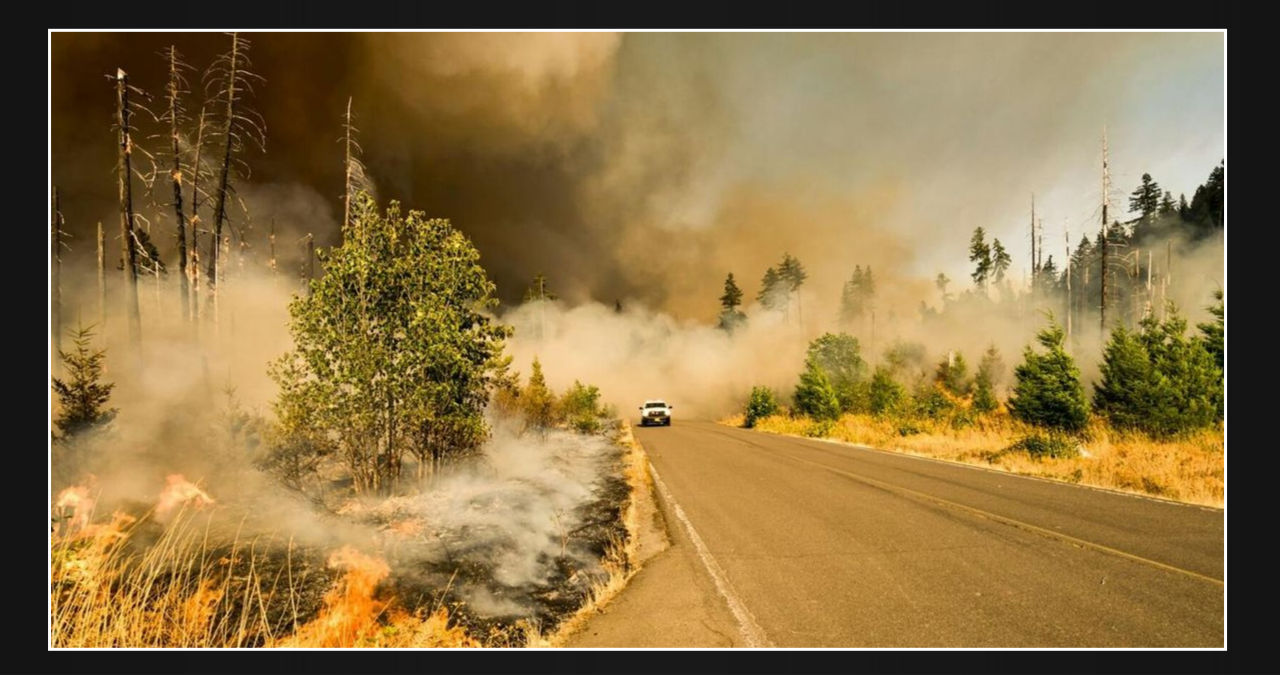Puget Sound Energy, along with other utility companies in Washington state, is making necessary arrangements to potentially cut power during high-risk wildfire conditions.
As of now, the fire season has been relatively calm in Washington. However, a significant blaze named the Pioneer Fire is currently raging across 30,000 acres along the northeast side of Lake Chelan in central Washington.
In an effort to prevent the outbreak of fires during conditions that are conducive to blazes, such as high winds, dry conditions, low humidity, and lightning storms, a Public Safety Power Shutdown (PSPS) is implemented. Its primary objective is to ensure public safety.
During a hearing on Monday, where three major utility providers discussed their preparations for potential PSPS events, Washington Utilities and Transportation Commission Chair, David Danner, highlighted the timeliness of the topic. He stated, “This is very timely, as just today I learned of new wildfires in Chelan County and Franklin County, and this is the season.”
Puget Sound Energy’s director of electric operations is Ryan Murphy.
Murphy informed UTC members that PSE has been focusing on prevention efforts in areas that have experienced significant wildfires in recent years and emphasized that they have not yet implemented a public safety power shutoff.
According to him, a considerable amount of work was carried out, particularly during March, April, and May, to guarantee that areas with medium to high risk were in optimal condition. He stressed the importance of taking proactive measures to ensure the safety and security of these areas.
The regions encompass a significant portion of Kittitas County, including the areas surrounding Cle Elum and Ellensburg, as well as Skagit County, which includes Concrete and Marblemount.
Murphy highlighted that the areas with the highest risk, depicted in red on the map, encompass almost 30,000 customers in total.
According to him, the equipment available now enables officials to closely monitor power lines when weather conditions pose a high risk of fire.
Murphy explained that turning on enhanced powerline settings makes the equipment more sensitive.
Taking proactive measures to prevent fires may come with certain trade-offs.
Murphy pointed out that there is a possibility of experiencing more frequent and prolonged power outages due to the current situation.
According to him, if there is a high risk of fire due to weather conditions, customers will receive an alert regarding any potential power shutdown.
Murphy stated that their primary objective is to establish communication with their at-risk customers 48 hours in advance, making it their first point of contact when a PSPS warning is issued. He also emphasized the importance of prioritizing power restoration through an equitable approach.
According to him, there was a strong emphasis on building equity into their restoration priorities this year. The focus was on restoring vulnerable communities first. The hard work put in was to ensure that these communities received priority attention.
During the meeting, Vern Malensky, the Director of Electrical Engineering at Avista Power Company, provided an update on the preparations for a PSPS event.
According to him, a public safety power shutoff is a significant decision that utilities do not make lightly. While he hopes that they never have to initiate one, once it is in motion, they are fully equipped to assist the affected communities.
According to Malensky, Avista is facing a tough time dealing with the rising premiums of wildfires and the decrease in insurance coverage. He further emphasized that if a major wildfire occurs, the company might become uninsurable.
He stated that insurance may not be obtainable from the market.
The members of UTC cautioned Malensky against engaging in any conversation regarding the possibility of increasing rates for customers, as the organization already has scheduled rate-setting meetings.
During the UTC meeting, Melissa Swenson, the director of wildfire mitigation programs at Pacific Power, provided an update on her company’s plans.
According to her, their services cater to around 140,000 customers, and they operate over an area of almost 2,700 square miles.
Walla Walla and Yakima are both within Pacific Power’s service area in Washington.
According to her, they have utilized modeling techniques to pinpoint regions with increased fire vulnerability in the Nile Valley near Yakima.
According to her, shutting down power proactively can be executed in any location at any given time, similar to other utilities.
Swenson emphasized the importance of being prepared for a PSPS situation, as it can occur in any location.
According to an investigation by the Department of Natural Resources, sparks from a security light mounted to a pole by Inland Power and Light caused the Gray Fire in Medical Lake last year. This devastating incident was reported by The Center Square.
Thousands of individuals were displaced and 240 homes were destroyed as a result of the fire that consumed 10,000 acres.



